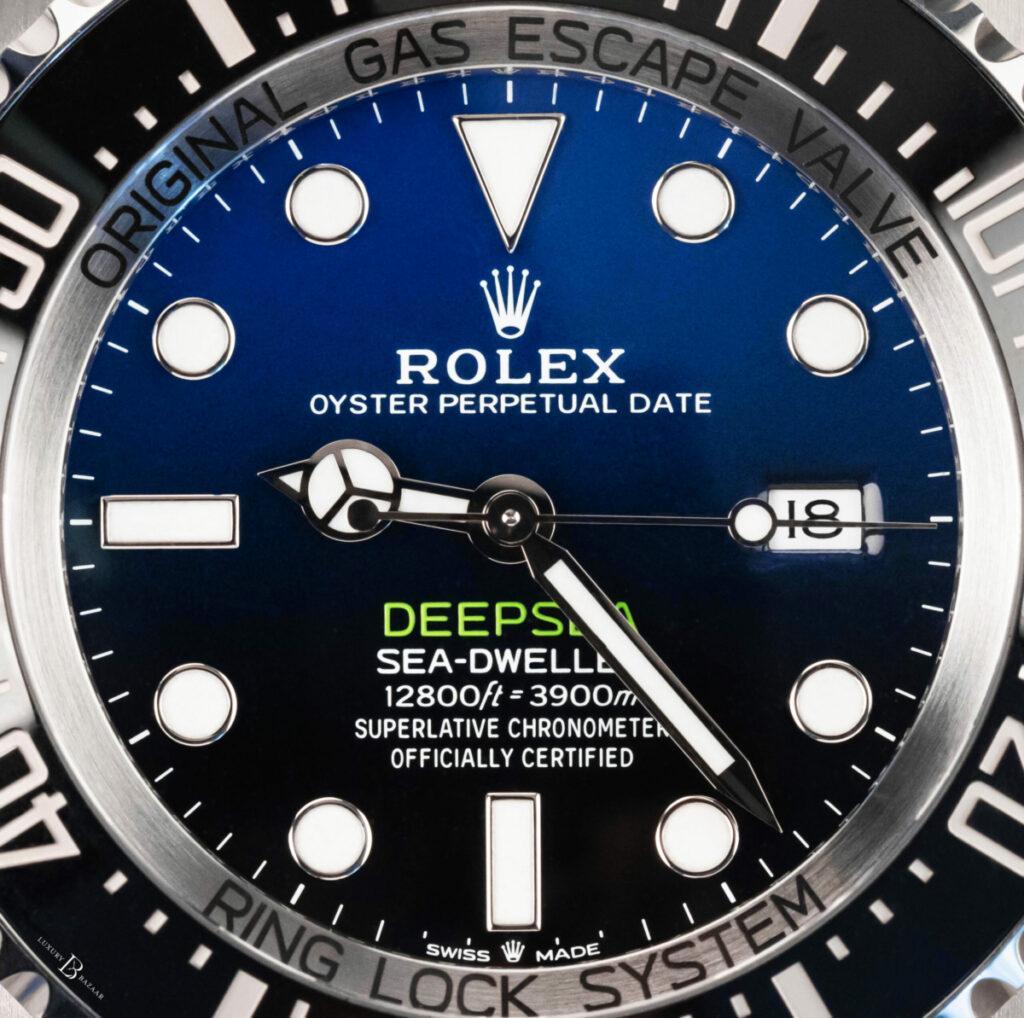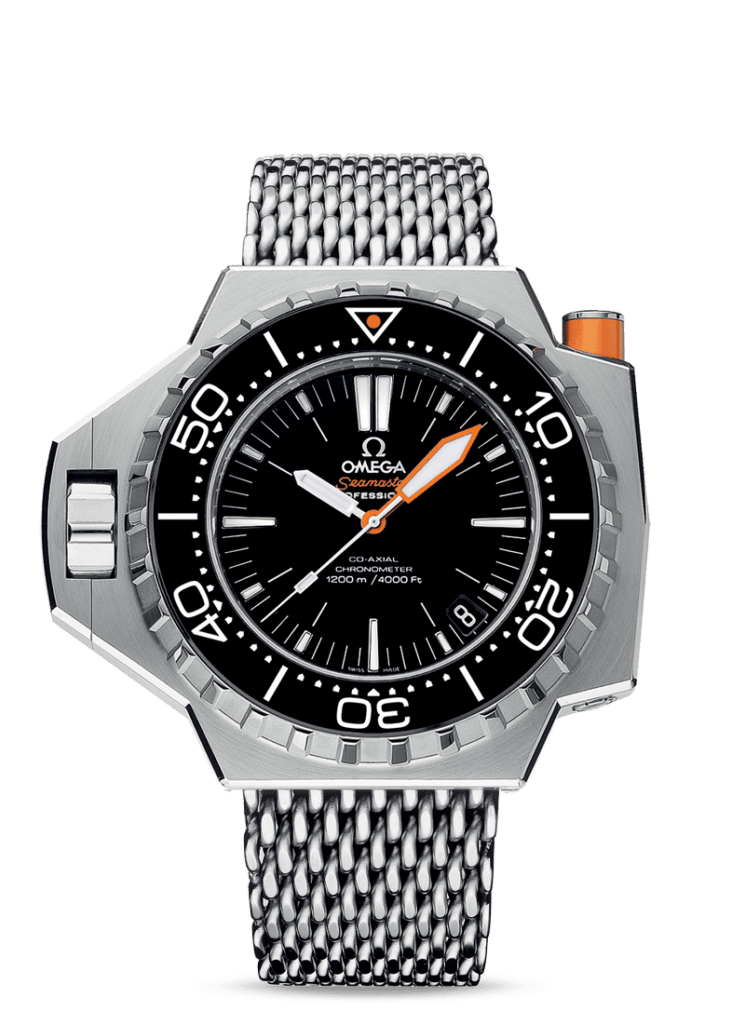A dive watch (also referred to as a diver watch) is a sports watch purposely built for underwater diving. The design we know and recognize today as a diver watch has been around for about 70 years, born around the time that recreational diving really took off. While details have been improved and materials have, in some cases, become more luxurious, all diver watches share fundamental design traits. These include water-resistant cases, rotating timing bezels, luminous dials, and running seconds indicators.
Today, dive watches are hardly ever used as the tool they were designed to be, yet that has not diminished their popularity in the slightest. In fact, diver watches are some of the most popular styles in the modern luxury watch space, even if they never submerge more than five feet. There’s even a special name for it: the desk diver.
From their history and how to use one to the most popular dive models in the market, here’s everything you need to know about dive watches.
Brief History of the Dive Watch
Some early watches for diving included the 1932 Marine watch by Omega, in addition to Panerai watches for the Italian Navy and Hamilton Canteen watches for the US Navy – both made during World War II. However, while these watches were built with water resistance in mind, they did not include any timing bezels.
The First Dive Watch
In 1953, Blancpain introduced the Fifty Fathoms, which was the first modern diver’s watch, complete with a rotating timing bezel. It takes its name from its water depth rating where 50 fathoms is equal to about 91 meters.
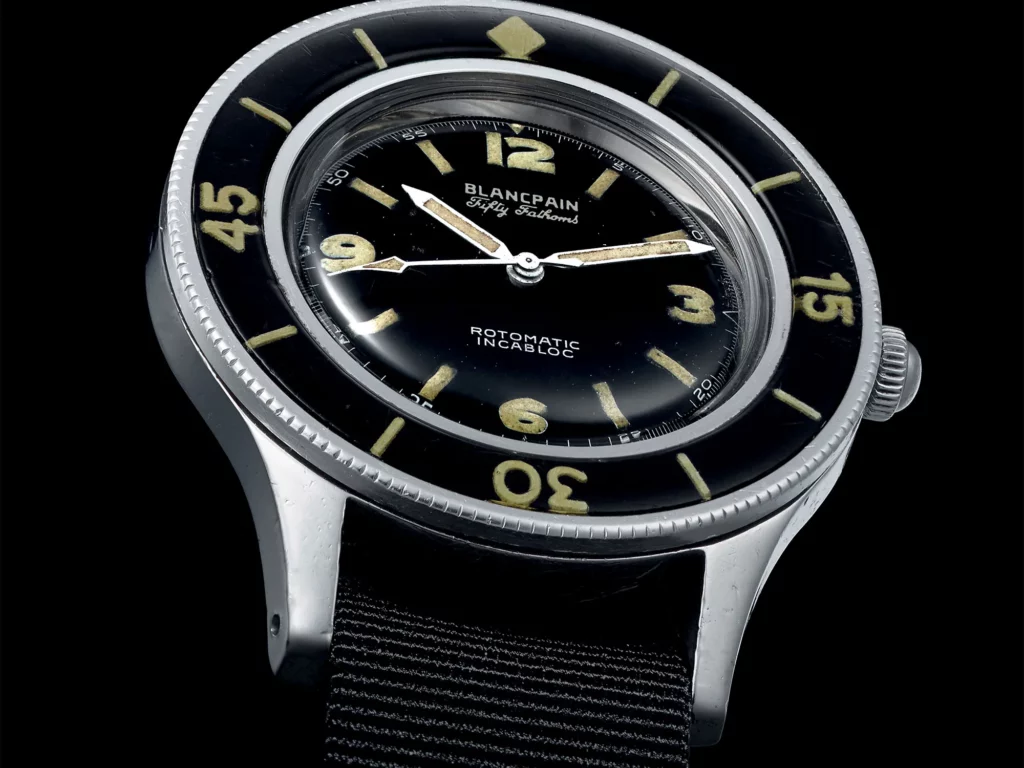
That same year, Rolex and Zodiac introduced their diving watches: the Submariner and the Sea Wolf, both water-resistant to 100 meters. The Rolex Submariner eventually grew to become the most popular diving watch in the world, made famous in part by none other than Sean Connery as James Bond in several 007 films.
Further reading: How Much Can I Get for My Used Submariner?
The 1950s saw several other brands throw their hat into the dive watch ring. In 1957, Omega launched the Seamaster 300 and Breitling introduced the Superocean. In 1959, Jaeger-LeCoultre followed suit and unveiled the Deep Sea Alarm, which was the world’s first dive watch with an alarm.
The 1960s and 1970s saw brands create diving watches for greater depths including the Rolex Sea-Dweller, Omega Ploprof, and the Seiko Diver’s 600M. The helium escape valve was pioneered in the 1960s by Rolex and Doxa, allowing watches to survive decompression periods.
Rolex and Omega have been trying to outdo each other with extreme dive watches for decades. For instance, in 2022, Omega introduced the Seamaster Planet Ocean Ultra Deep boasting water resistance of 6,000 meters. Rolex introduced the Deepsea Challenge a few months later, rated to an unprecedented depth of 11,000 meters.
What Makes a Dive Watch a Dive Watch?
To be considered a true dive watch, the timepiece has to include the following features:
- a minimum water depth rating of 100 meters (300 feet) – however, most modern luxury models have at least double that
- a diving time indicator – usually in the form of a unidirectional rotating bezel with a 60-minute scale on a high-end timepiece. A bezel that only turns in one direction is safer as it prevents the diver from underestimating how long he/she has been underwater
- a dial and bezel with luminous accents for easy reading underwater
- an indication that the watch is running (such as a seconds hand) and this indication must be visible in total darkness (with lume)
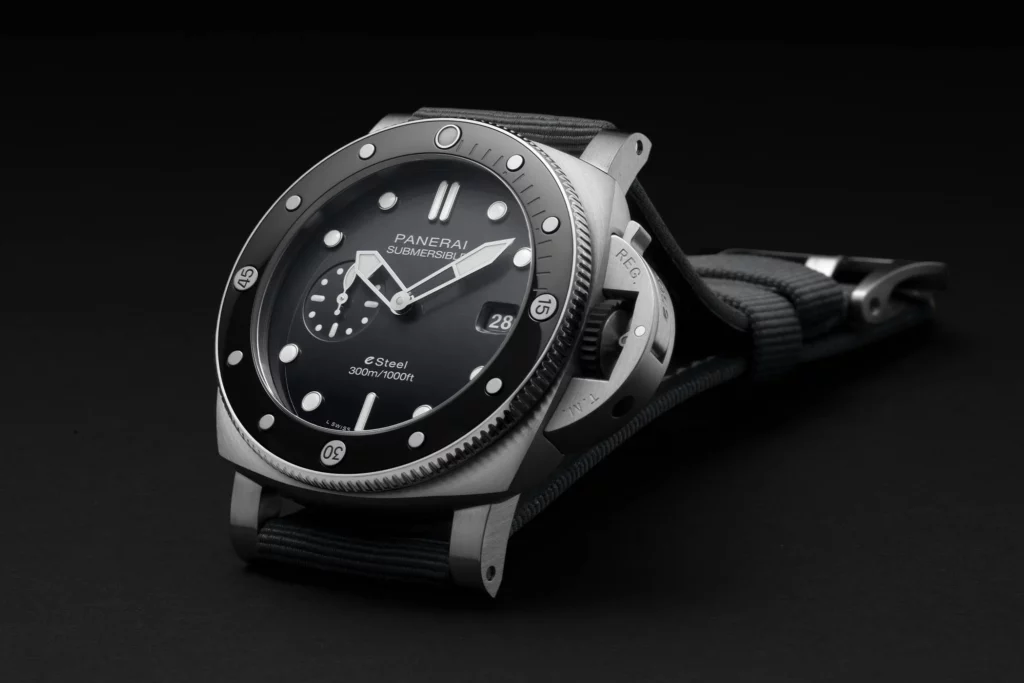
Some of the most popular modern luxury dive watches on the market today include the following:
- Rolex Submariner
- Tudor Black Bay
- Omega Seamaster Diver 300M
- Blancpain FiftyFathoms
- Royal Oak Offshore Diver
- Panerai Submersible
- Breitling Superocean
- IWC Aquatimer
- TAG Heuer Aquaracer
ISO 6425 Standard
The ISO 6425 standard (first published in 1982 and the most current edition released in 2018) identifies the minimum requirements and test methods for divers’ watches. While most dive watches on the market are not ISO 6425 certified (some watchmakers simply choose not to apply for the standard certification but still adhere to the criteria) some are.
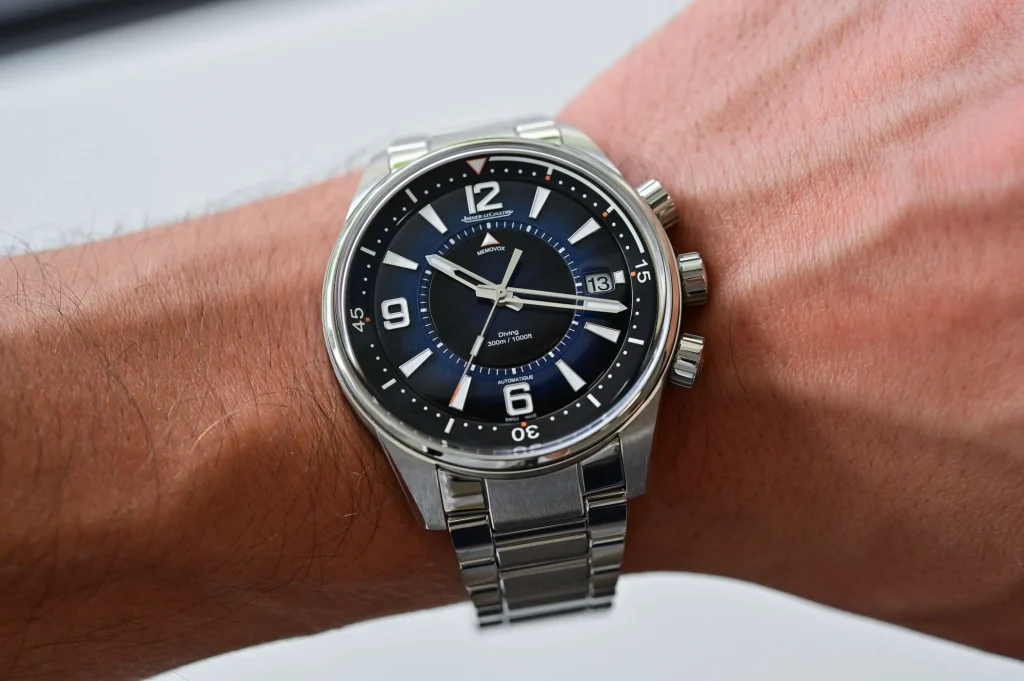
A few ISO 6425-compliant models include:
- Jaeger-LeCoultre Polaris Mariner
- Calibre de Cartier Diver
- Omega Seamaster Planet Ocean Ultra Deep
- Grand Seiko Spring Drive SBGA461
What is the Bezel on a Dive Watch for?
As mentioned, a undirectional rotating timing bezel is an integral part of a diver’s watch. It is designed to turn only one way (counterclockwise) and serves to tell the diver how much time has elapsed so as not to run out of air while underwater.
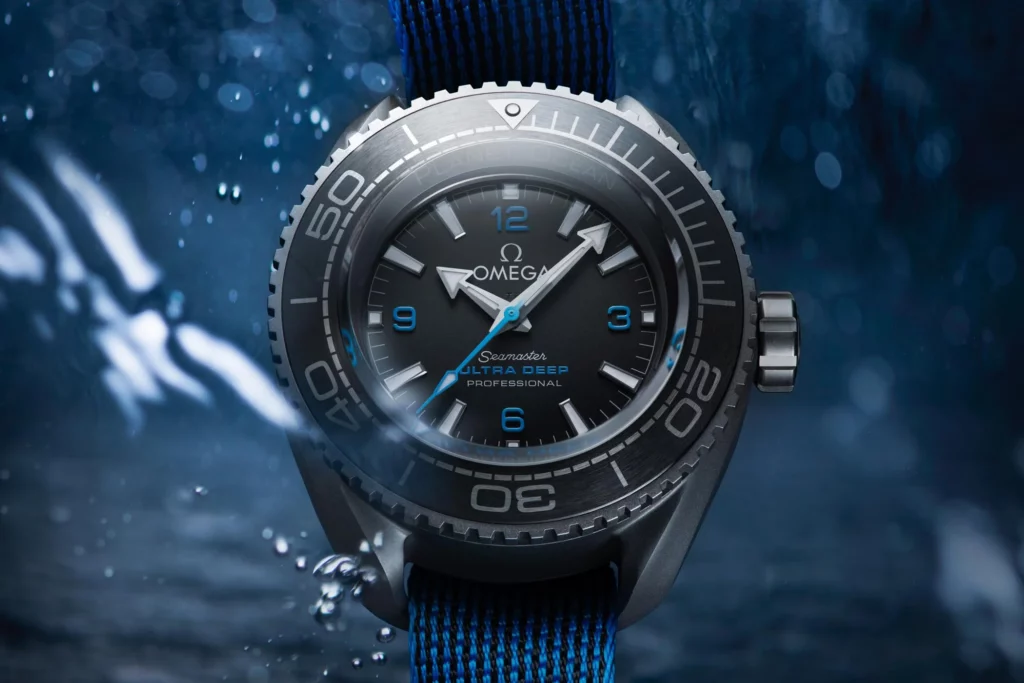
So how do you use a diving bezel? It’s surprisingly easy.
- Before the descent, align the 12 o’clock marker on the bezel with the minute hand
- The elapsed minutes can now be read off the bezel, which is home to a 60-minute scale with clearly marked 5-minute intervals
While most dive watches will have external rotating bezels on top of the case (such as the Rolex Submariner and Omega Planet Ocean) others have internal rotating bezels on the dial (such as the AP Royal Oak Offshore Diver and IWC Aquatimer).
The Helium Escape Valve Explained
Some models are built specifically for saturation diving, and many of them include a helium escape valve (also known as HEV, helium valve, or helium release valve). Contrary to popular belief, a helium escape valve does not increase a watch’s water resistance. Rather, it serves to expel helium from a watch.
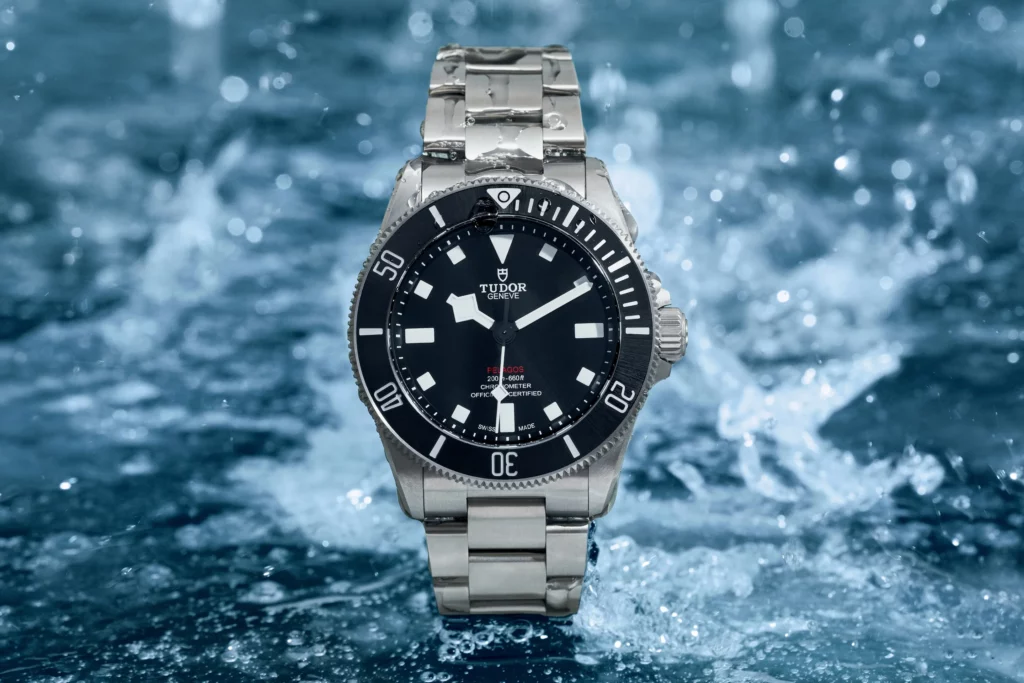
Saturation divers can spend up to a month working and living underwater, and remain in pressurized environments the entire time while breathing a special gas mixture comprising mostly of helium with some oxygen. During this time, helium atoms can seep into a watch case so that the pressure inside equals the diving habitat.
How it looks on the wrist: Rolex Sea-Dweller on the Wrist
Before saturation divers ascend to the surface, they must undergo lengthy decompression periods to allow any dissolved gases in the bloodstream and/or body tissues to safely dissipate. If the helium inside a watch cannot escape quickly enough during decompression, then the pressure difference can cause the watch to burst and pop the crystal off. Therefore, the helium valve allows the gas to expel quickly and automatically from the watch, thereby preventing any pressure differences that could cause damage.
Some well-known models fitted with helium escape valves include:
- Rolex Sea-Dweller and Deepsea
- Omega Planet Ocean
- Tudor Pelagos
- TAG Heuer Aquaracer Professional 1000 Superdiver
If you’re looking for a dive watch to add to your collection, don’t miss Marco Ferrante’s thoughts on The 5 Best Dive Watches to Buy Right Now.
More from this series:
What is a Perpetual Calendar Watch?
What is a Tourbillon Watch?
What is a GMT Watch?
What is a Chronograph Watch?
What is a Minute Repeater Watch?


